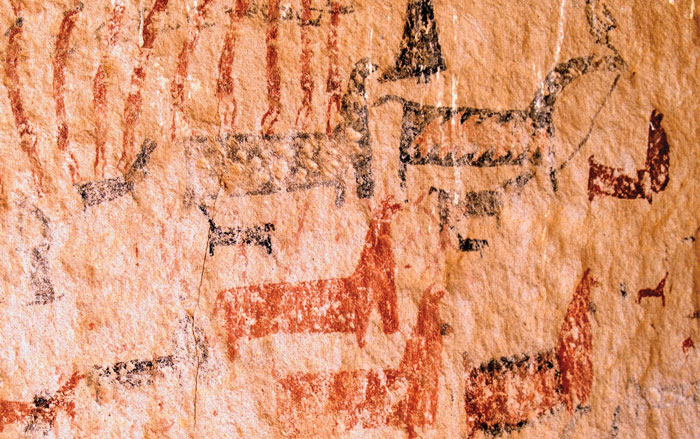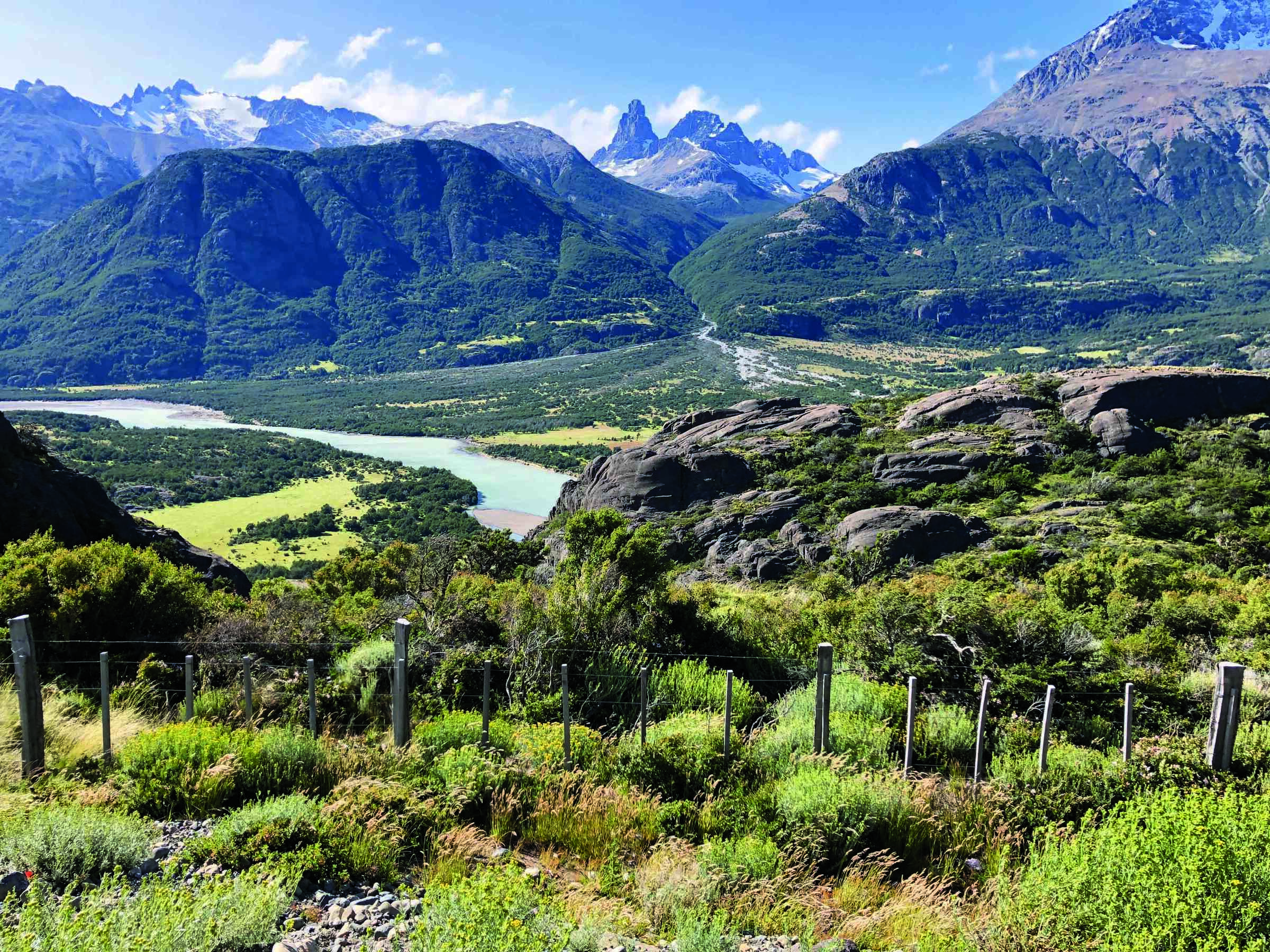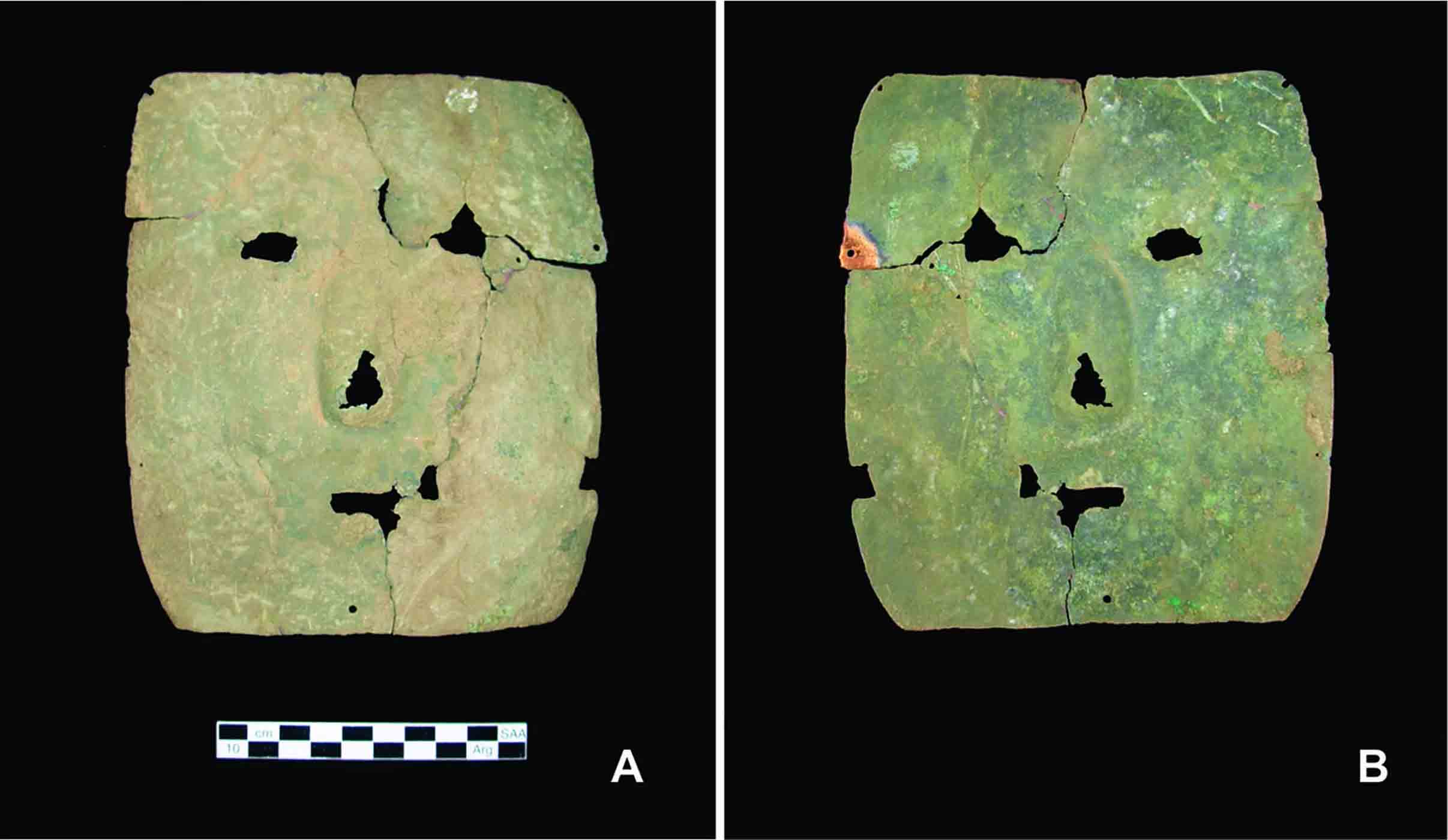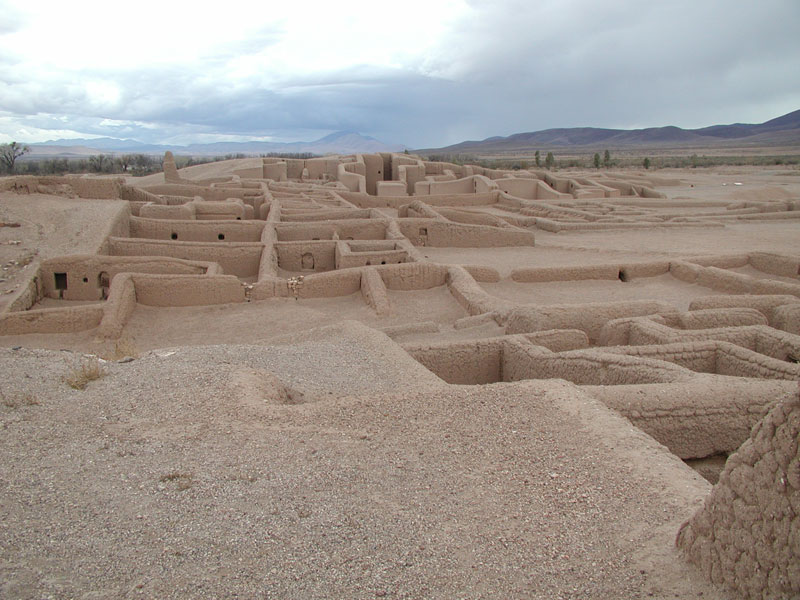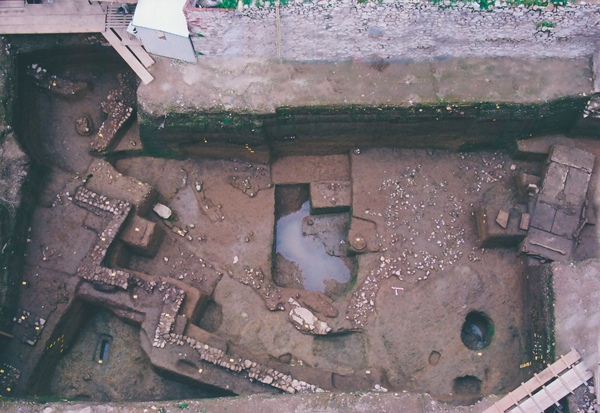
Located in the province of Jujuy in northern Argentina, Pucará de Tilcara is the site of a pre-Inca fortification built around the twelfth century. Situated on a hill outside the small town of Tilcara, it was built by the ancestors of the Omaguaca tribe, renowned warriors who were also experts in agriculture, weaving, and pottery. Though the region of Humahuaca has evidence of occupation going back 10,000 years, it reached its peak around the fourteenth century A.D., when Pucará de Tilcara was an important administrative military center that covered 15 acres and housed more than 2,000 people. In addition to living quarters, the pucara (Quechua for "fortress") contained corrals, sites for religious ceremonies, and burials. The tribes in the region were later conquered by the Incas just decades before the Spanish arrived in 1536. Constanza Ceruti, the only female high-altitude archaeologist in the world and Director of the Institute of High Mountain Research at the Catholic University of Salta, made Pucará de Tilcara her home, living in an adobe house at the foot of the site for five years while she studied the Inca shrines in the Andean peaks nearby.
The site
From the town of Tilcara, the pucara is accessible by foot, and you will see many llama and cacti along the way. Just be sure to wear good walking shoes—it can be a rather exhausting climb. The site was strategically chosen by the Omaguaca to be easily defensible, and it provides good views over the surrounding UNESCO-listed valley, Quebrada de Humahuaca. The remains of many structures can still be seen today, though part of the site was reconstructed in the 1950s, when excavation was taking place. The small square stone buildings, pirkas, were constructed without mortar and roofed with grass, known locally as ichu, and cactus wood. The houses were built without windows and with very narrow doorways to conserve heat at night, when temperatures drop in the high-altitude desert. Visitors are free to enter the houses, but be sure to treat them with care. You can see the highlights of the pucara— including the ceremonial ruins known as "the church" and some of the reconstructed households—in a one-hour visit. However, if you have time, it is worth wandering beyond the reconstructed areas and into the necropolis and corrals.
While you're there
The village of Tilcara is the archaeological capital of Quebrada de Humahuaca. There is an archaeological museum in the village that is considered one of the most important for the region, in addition to a paintings museum, sculpture museum, and Carnival museum. (Carnival time is one of the best times to visit!) The adventurous can book four-wheel drive excursions and go hiking, horseback riding, and even sandboarding in the surrounding dunes. The village is also the starting point for pilgrimages to nearby mountain shrines. Ceruti says that joining one of these modern Andean processions can be a life-changing experience.


